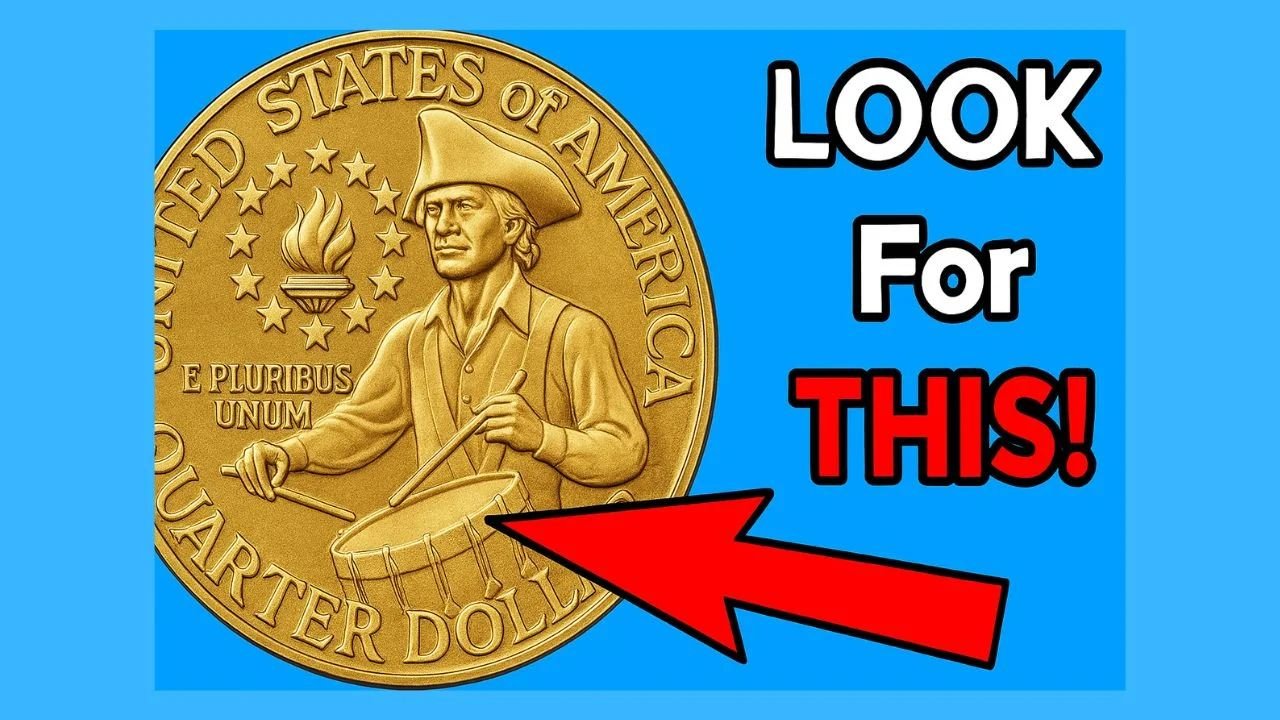We live in a digital world, yet there remains a tangible thrill in the weight of a coin in your palm. It’s a small, metallic piece of history, and sometimes, a story emerges that captures our collective imagination. Recently, a fantastical tale has been swirling around the internet, claiming that a specific 1976 Bicentennial Quarter—worth an eye-watering $2.5 billion—is hiding in someone’s loose change. While this particular story is a modern fable, the real journey of these coins is a captivating slice of American life that continues to intrigue us.
A Coin Forged from Celebration
To understand the appeal of the Bicentennial Quarter, we must travel back to 1976. The United States was preparing for a monumental birthday: its 200th anniversary. The entire nation was swept up in a wave of red, white, and blue patriotism, and the U.S. Mint decided to join the party in a uniquely public way. They released special commemorative versions of the quarter, half-dollar, and dollar coin into everyday circulation. For the quarter, the traditional eagle on the back was set aside. In its place was a striking new design: a determined colonial drummer boy, with a torch of liberty burning brightly beside him, all encircled by thirteen stars for the original colonies. The front kept George Washington’s profile but was stamped with the dual date “1776-1976.” This simple act meant that every citizen could carry a piece of the national celebration in their pocket, making history feel immediate and personal.
The Real Story Behind the Billion-Dollar Rumor
So, how did a widely circulated coin become the subject of such an outlandish financial claim? The story of the $2.5 billion quarter is a classic piece of internet folklore—a myth that endures because it speaks to a universal hope: the dream of finding a life-changing treasure in the most ordinary of places. In truth, the overwhelming majority of Bicentennial Quarters are worth exactly twenty-five cents. Their value lies not in currency, but in their story. However, as with any mass production, rare anomalies slipped through. Coins struck on 40% silver planchets (made for special collector sets), or those with dramatic minting errors like being double-stamped or struck off-center, can be valuable to collectors. These rare versions can be worth anywhere from a few dollars to several thousand for pristine, high-grade examples. But the key takeaway is that even the most exceptional Bicentennial Quarters are valued in the thousands, a far cry from the billions of the viral tale.
The Enduring Legacy in a Collector’s Hands
The true worth of the Bicentennial Quarter isn’t found in a price tag, but in the connection it fosters. For many, it’s a nostalgic artifact from a defining year in modern American history. For collectors, the value is in the hunt. Sifting through a roll of coins from the bank or glancing at the change from a grocery store transaction becomes a small adventure. Finding a Bicentennial Quarter, especially the slightly heavier 40% silver version, is a small victory. It’s a tangible link to the past, a beautifully designed piece of art, and a reminder of a time when the entire country paused to celebrate its founding ideals. This emotional and historical resonance is what makes them truly cherished.
Your Own Pocketful of History
Could you actually find one today? The answer is a resounding yes. Given the hundreds of millions minted, Bicentennial Quarters are still very much out there. You might receive one back from a vending machine, find it in a handful of change from a convenience store, or discover it while sorting through an old family jar of coins. While the chances of finding one of the rare, valuable errors are incredibly slim, the likelihood of holding a standard-issue piece of 1976 is quite high. The real treasure of the Bicentennial Quarter is not a billion-dollar fantasy, but the enduring narrative it carries. It’s a miniature monument, a conversation starter, and a testament to the simple joy of discovery. The next time you hear the jingle of coins, take a moment to look. You may not unlock a fortune, but you might just find a small, resonant piece of the American story—and that is a reward in itself.
